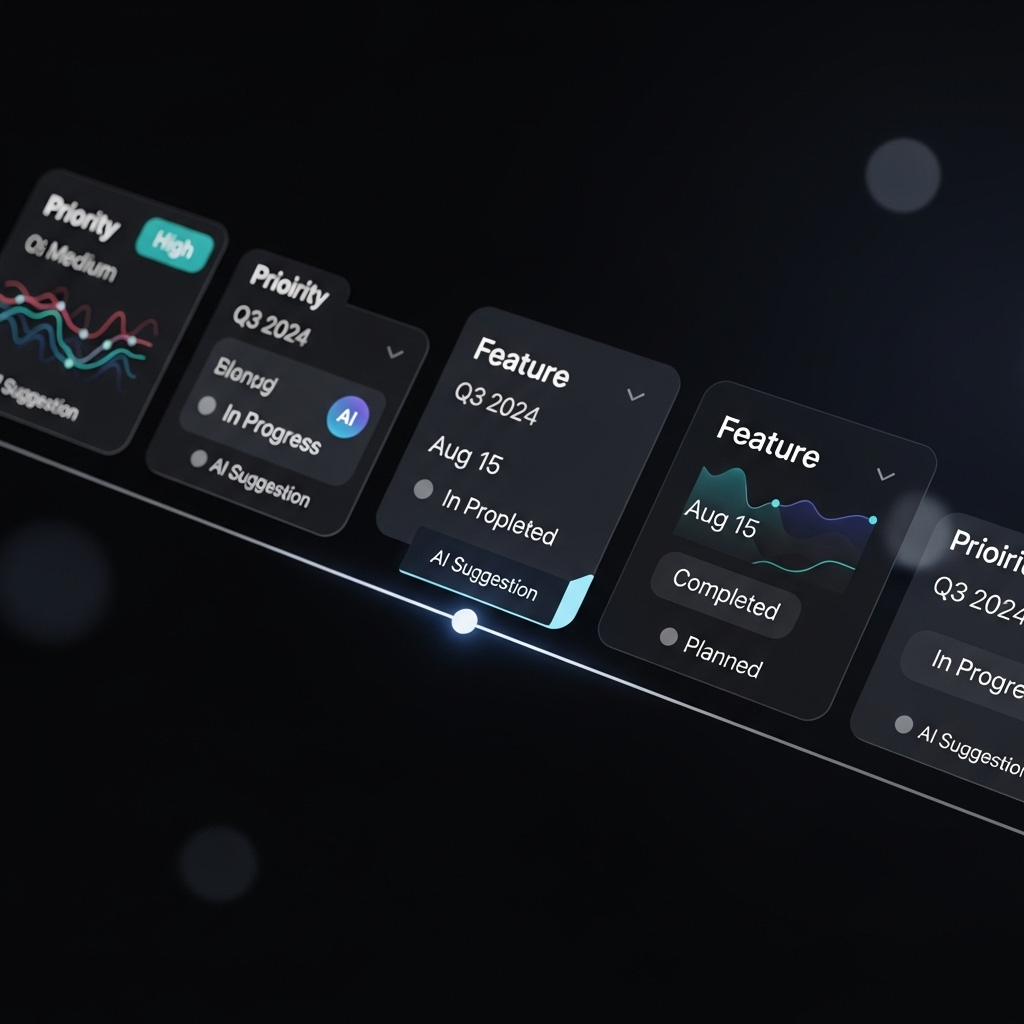AI-Driven Product Roadmapping: Smarter Planning for Digital Growth

Product roadmaps turn ideas into outcomes. Traditional roadmapping depends on stakeholder debates, manual research, and static timelines. AI-driven product roadmapping adds machine learning and predictive analytics to that mix, which helps teams spot patterns, reduce bias, and make faster decisions that track to business goals.
What is AI-driven product roadmapping?
It is the practice of using models to analyze customer feedback, usage data, market signals, and delivery performance, then ranking initiatives by expected impact. Instead of stitching spreadsheets, teams work from a living model that updates as new evidence arrives.
How does AI select and prioritize features?
Algorithms group similar feedback, detect churn risks, and estimate lift from potential improvements. If many users stall during onboarding, the model flags that journey and recommends fixes with the highest expected retention gain. Forecasts can include cost to build, time to value, and risk, which helps leaders compare options on the same scale.
Where does the data come from?
Useful inputs include product analytics, support tickets, sales notes, NPS comments, competitive releases, and engineering metrics like lead time or defect rates. Quality matters. Clean, labeled data produces better signals, while noisy or biased data misleads the roadmap.
Does AI replace product judgment?
No. Models surface patterns, humans set direction. Product managers still define vision, guardrails, and ethical standards. A model may favor a short term conversion boost. Leadership may choose an accessibility investment because it protects trust and long term growth. The best teams use AI as a decision partner, not an autopilot.
What results can enterprises expect?
Roadmaps become responsive rather than rigid. Teams retire low value work sooner, focus on features that move activation or expansion, and defend choices with traceable evidence. Engineering benefits too, since clearer priorities reduce thrash and improve delivery predictability.
How do you start?
Begin with a narrow question such as which onboarding steps delay time to value. Centralize data, define success metrics, and run small experiments that loop results back into the model. Share transparent reasoning in your roadmap notes so stakeholders can see why a decision changed when the data changed.
Where does this work best?
SaaS, biotech, fintech, and logistics all benefit because they operate on rapid feedback loops and complex integrations. In regulated spaces, pair models with privacy reviews and audit trails so training data and predictions remain compliant. With that foundation in place, AI becomes a durable advantage for planning, not a novelty.
